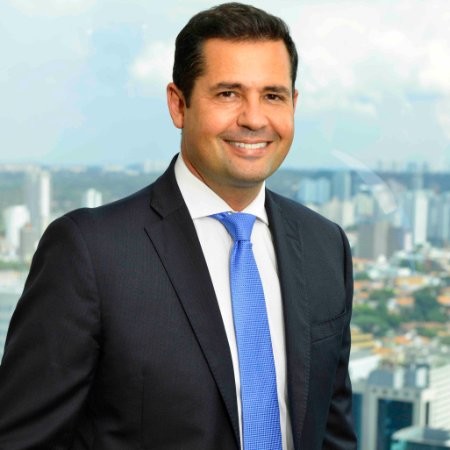
According to Rodrigo Dienstmann, president of Ericsson’s Southern Cone, Colombia and Peru will be among the largest players in 5G FWA in Latin America, given the still low penetration of fiber broadband services compared to other countries in the region. It is said that these are two of the most potential markets for development.
FWA essentially consists of installing a 5G “modem” as a last-mile connection to a home network, and is one of the big bets for the Swedish supplier.
“Colombia still has a very significant opportunity to grow in fixed broadband. Unlike Brazil, which has thousands of fiber optic providers, Colombia does not yet have high FTTH penetration. Additionally, there are many remote areas with no coverage. There are also many regions. The FWA opportunity in Colombia is one of the most promising in the region,” Dienstmann said in response to a question from BNamericas at a press conference on Friday.
Market entrant Telecall, the Brazilian provider that won one of the national licenses in Colombia’s 5G auction, is one of the players openly betting on FWA with its local 5G business plans.
As previously reported by BNamericas, Telecall held post-auction meetings with several network vendors, including Ericsson.
The scenario is similar in Peru. FTTH penetration is even lower than in Colombia, with little diversity of fiber providers, a good consumer market, and large areas of unconnected remote and rural areas.
However, as Dienstmann pointed out, the country has not yet set a date for the 5G auction.
This week, Peru’s telecommunications authority submitted guidelines for preparing tenders for the 3.5GHz and 26GHz spectrum bands to local investment promotion agency ProInversión.
In the best-case scenario, this bid would be made by the end of the year.
market outlook
Despite the overall slowdown in the global mobile infrastructure market and some weakness being felt in Latin America, Dienstmann maintains that he is optimistic about Brazil and Latin America in general.
The company reported a 3% decline in 2023 net sales in its market region consisting of Europe and Latin America. Currency-adjusted sales decreased 9%.
“Sales decreased in both Europe and Latin America following high levels of investment in 2022,” the company said in its fourth quarter financial report. “Reported sales were down -8%.”
The executive said demand will remain strong in Brazil for some time due to the exchange of spectrum payments and mandatory multi-year investment in 5G.
He said Brazil accounts for almost 70% of all current 5G access in Latin America.
“What we are generally hearing from our customers in the region is that if they can move from investing in 4G to investing in 5G, they will. It’s impossible to do this completely because there is still a lot of coverage. But I think there is a positive outlook in terms of demand,” Dienstmann said in response to BNamericas.
Additionally, he emphasized that new 5G-related technologies and network architectures, including FWA, are also an opportunity in Brazil.
The company also praised the reallocation of the 700MHz spectrum returned from Winity by Brazilian regulator Anatel and the interest of regional providers in this band. This frequency has a wide range and is considered useful for both 4G and 5G coverage complementation.
However, Dienstmann said that ideally, Anatel would issue a new bid for the spectrum rather than granting it for secondary or temporary use.
Elsewhere in the region, recent spectrum auctions in Uruguay, Argentina and Colombia, as well as the upcoming second 5G spectrum auction in Chile, are seen as good opportunities for the company.
Asked about the deal, Ericsson has already held auctions and renewed virtually all existing contracts for the supply of antennas and related equipment to carriers in Latin American countries that have started launching 5G networks. Dienstman said.
However, the company has not disclosed details of the number of contracts.
AI, satellites, etc.
Other potential growth avenues for Ericsson include artificial intelligence (AI), private networks and direct mobile connectivity via satellite.
Andrea Faustino, vice president of cloud software and services at Ericsson, said AI will help improve the management of 5G networks, improve carrier billing and charging systems, improve energy management of network equipment, and improve operator General network automation.
Private networks remain tight-lipped about how many projects Ericsson has in the region. The company has only released a few of them so far. Ericsson’s lawsuit also includes Brazil’s Nestlé and WEG.
Dienstmann said he just signed a contract for a private network project with a large company in the Brazilian state of Minas Gerais.
Finally, Ericsson claims that several carriers have been discussing with it new satellite-to-device or direct-to-satellite communications technologies and integration models between terrestrial network technologies.
Basically, if a 4G or 5G network is not present, the user’s phone will automatically switch to satellite. In executives’ view, the service is synergistic and can serve as a complement to ground antennas in places where infrastructure is lacking.
He dismissed the concept of direct competition with satellite companies, but said it would mean competition for network vendors if carriers could ultimately opt for satellite connectivity instead of installing new antennas in isolated areas. I will do it.


